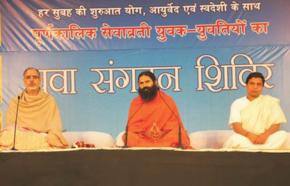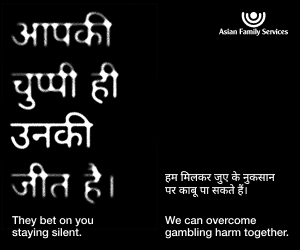Is Sanyasa about making a difference?

The Baba Ramdev episode has thrown up a key question — should sanyasis be involved in social activism instead of leading a quiet monastic life? It would seem that sanyasis cannot be a social leader since they are not supposed to own any worldly belongings or be attached to the material world. After all, a sanyasi is ‘one who has renounced material life, isn’t it? But with Baba Ramdev’s social activism, is Sanyasa about making a difference in the society as well?
Here is a yoga Guru believed to be born in 1965 in Haryana to a farmer, takes to yogic discipline at 14, then gets ordained as a monk at 30 in1995 to become Swami Ramdev. Thereafter Baba Ramdev, as he is popularly called, in 2002 starts mass education of India’s best known global brand called ‘Yoga’ and that too through mainstream media.
In the last 10 years or so Baba Ramdev has led the way to bring ‘Yog, Pranayam and Ayurved’ to millions of homes in India and overseas. Moreover he is said to command a yoga and Ayurveda business empire estimated to be worth more than US $250 million (Rs.1100 crores).
With Baba Ramdev, what started as a mass education on yoga and Ayurvedic practice is now a health crusade intertwined with social activism on ‘Swadeshi’ lines. All this has been achieved by Baba Ramdev as an ordained ‘Sanyasi’.
With Baba Ramdev’s crusade, it’s an opportunity to understand the concept of Sanyasa in the modern world. ‘Sanyasa’ is the most revered stage of life in Indian culture and glorified by the Holy Vedas. In fact there are atleast 16 Upanishads (called Sanyasa Upanishads) that directly speak on sanyasa. In the Indian tradition, renunciation is considered to be the ideal. Hence heroes in Indian culture are those who have renounced or sacrificed.
The word sanyasa comes from the Sanskrit word 'samnyasa': This is derived from two roots: ‘sam’ meaning complete or total and ‘nyasa’ meaning 'renunciation’. So a sanyasi is understood as one who has renounced everything i.e. all egocentric actions and turned towards a higher life of austerity and asceticism. The Holy Geeta defines sanyasa as “kamyanam karmanam nyasam sannyasam kavayo viduh” meaning “The Sages understand sanyasa to be ‘the renunciation of desire prompting actions’".
The sanyasi’s resolve is to transcend the rigmarole of fleeting pleasures to achieve a permanent state of unbroken happiness (Godhood). The sanyasi’s oath in the Vedic tradition therefore renounces the pleasures of this world, and even pleasures of the astral world and of the heavens - all the three worlds.
So sanyasis don’t have any possessions and relinquish all material wealth as they have outgrown worldly pleasures out of right thinking. That’s what a Siddharta Gautama did to become a Gautam Buddha and influence millions across the globe. That’s what a young Shankara did to become the great Acharya Adi Shankara. History tells us that the Vedic Rishis, the Buddha, Acharya Shankara, the exalted Thirthankar Mahaveer championed the path of renunciation over other paths.
But the sanyasa heritage in India has seen both extremes from the most austere to the opulent – from Mahaveer and Ramana Maharishi to the affluent Osho Rajneesh. While some sanyasis lived a quiet teaching life in a remote place, others got dynamic in social life. In many ways, the ancient order of sanyasa was influenced by great Gurus, saints who were also reformers.
Swami Krishnananda of the Divine Life Society observes “Swami Vivekananda brought in a new atmosphere into the Sanyasa order by introducing a greater social sense...Monks who were originally spiritually oriented also became socially oriented on account of a need of the times that was felt.”
So what is the role of renunciates in this modern age? Though sanyasis have an educative role and a strict code of conduct, this may depend on their Guru, lineage and also their personal level of spiritual attainment. But sanyasis in India have played a huge part in social life, when times demanded. A quick review of the Indian spiritual and religious organizations shows that we have had many active monks. It is also interesting, and often neglected, that many of the sanyasis created incredibly large organizations, with much resources and follower base.
Historically it is well known that a learned Chanakya was responsible for the creation of the mighty Mauryan Empire. Swami Ramdas had Shivaji Maharaj’s patronage. Swami Vivekananda and Shri Aurobindo though they were sanyasis did not always wear orange robe and influenced great thinkers from political circles. Also many illustrious Gurus were renunciates (sanyasis) like Parahamsa Yogananda, Swami Rama, Swami Sahajanand, Swami Shivanand, Swami Niranjananand, Swami Satyanand among others who supported social upliftment.
In the not so distant past India has had larger than life social-reformer-saints like Sree Narayanguru (Kerala), Swami Keshwanand (Rajashtan), Jai Jalaram Bapa (Gujarat), Swami Dayanand Saraswati (Gujarat), Sathya Sai Baba (Andhra Pradesh) among others. In ancient times Gurus like Vashisht, Agastya and Vishwamitra advised the rulers. This heritage shows that Gurus were not just showing the society the way to God but also got involved in political and social issues. In fact people who are detached to material things are better able to do good to society.
Coming back to yoga, the most fundamental text of Yoga is the ‘Hatha-Yoga-Pradipika’, a classic written by Swami Swatmarama in the 5th Century C.E. This textbook mentions (in Ch-1, v12) that yoga should be practiced in a country where justice is properly administered, where good people live, and food can be obtained easily and plentifully. Is India one such country? May be that’s the India the social-reformer-Gurus want!!!
The Baba Ramdev episode has thrown up a key question — should sanyasis be involved in social activism instead of leading a quiet monastic life? It would seem that sanyasis cannot be a social leader since they are not supposed to own any worldly belongings or be attached to the material world....
The Baba Ramdev episode has thrown up a key question — should sanyasis be involved in social activism instead of leading a quiet monastic life? It would seem that sanyasis cannot be a social leader since they are not supposed to own any worldly belongings or be attached to the material world. After all, a sanyasi is ‘one who has renounced material life, isn’t it? But with Baba Ramdev’s social activism, is Sanyasa about making a difference in the society as well?
Here is a yoga Guru believed to be born in 1965 in Haryana to a farmer, takes to yogic discipline at 14, then gets ordained as a monk at 30 in1995 to become Swami Ramdev. Thereafter Baba Ramdev, as he is popularly called, in 2002 starts mass education of India’s best known global brand called ‘Yoga’ and that too through mainstream media.
In the last 10 years or so Baba Ramdev has led the way to bring ‘Yog, Pranayam and Ayurved’ to millions of homes in India and overseas. Moreover he is said to command a yoga and Ayurveda business empire estimated to be worth more than US $250 million (Rs.1100 crores).
With Baba Ramdev, what started as a mass education on yoga and Ayurvedic practice is now a health crusade intertwined with social activism on ‘Swadeshi’ lines. All this has been achieved by Baba Ramdev as an ordained ‘Sanyasi’.
With Baba Ramdev’s crusade, it’s an opportunity to understand the concept of Sanyasa in the modern world. ‘Sanyasa’ is the most revered stage of life in Indian culture and glorified by the Holy Vedas. In fact there are atleast 16 Upanishads (called Sanyasa Upanishads) that directly speak on sanyasa. In the Indian tradition, renunciation is considered to be the ideal. Hence heroes in Indian culture are those who have renounced or sacrificed.
The word sanyasa comes from the Sanskrit word 'samnyasa': This is derived from two roots: ‘sam’ meaning complete or total and ‘nyasa’ meaning 'renunciation’. So a sanyasi is understood as one who has renounced everything i.e. all egocentric actions and turned towards a higher life of austerity and asceticism. The Holy Geeta defines sanyasa as “kamyanam karmanam nyasam sannyasam kavayo viduh” meaning “The Sages understand sanyasa to be ‘the renunciation of desire prompting actions’".
The sanyasi’s resolve is to transcend the rigmarole of fleeting pleasures to achieve a permanent state of unbroken happiness (Godhood). The sanyasi’s oath in the Vedic tradition therefore renounces the pleasures of this world, and even pleasures of the astral world and of the heavens - all the three worlds.
So sanyasis don’t have any possessions and relinquish all material wealth as they have outgrown worldly pleasures out of right thinking. That’s what a Siddharta Gautama did to become a Gautam Buddha and influence millions across the globe. That’s what a young Shankara did to become the great Acharya Adi Shankara. History tells us that the Vedic Rishis, the Buddha, Acharya Shankara, the exalted Thirthankar Mahaveer championed the path of renunciation over other paths.
But the sanyasa heritage in India has seen both extremes from the most austere to the opulent – from Mahaveer and Ramana Maharishi to the affluent Osho Rajneesh. While some sanyasis lived a quiet teaching life in a remote place, others got dynamic in social life. In many ways, the ancient order of sanyasa was influenced by great Gurus, saints who were also reformers.
Swami Krishnananda of the Divine Life Society observes “Swami Vivekananda brought in a new atmosphere into the Sanyasa order by introducing a greater social sense...Monks who were originally spiritually oriented also became socially oriented on account of a need of the times that was felt.”
So what is the role of renunciates in this modern age? Though sanyasis have an educative role and a strict code of conduct, this may depend on their Guru, lineage and also their personal level of spiritual attainment. But sanyasis in India have played a huge part in social life, when times demanded. A quick review of the Indian spiritual and religious organizations shows that we have had many active monks. It is also interesting, and often neglected, that many of the sanyasis created incredibly large organizations, with much resources and follower base.
Historically it is well known that a learned Chanakya was responsible for the creation of the mighty Mauryan Empire. Swami Ramdas had Shivaji Maharaj’s patronage. Swami Vivekananda and Shri Aurobindo though they were sanyasis did not always wear orange robe and influenced great thinkers from political circles. Also many illustrious Gurus were renunciates (sanyasis) like Parahamsa Yogananda, Swami Rama, Swami Sahajanand, Swami Shivanand, Swami Niranjananand, Swami Satyanand among others who supported social upliftment.
In the not so distant past India has had larger than life social-reformer-saints like Sree Narayanguru (Kerala), Swami Keshwanand (Rajashtan), Jai Jalaram Bapa (Gujarat), Swami Dayanand Saraswati (Gujarat), Sathya Sai Baba (Andhra Pradesh) among others. In ancient times Gurus like Vashisht, Agastya and Vishwamitra advised the rulers. This heritage shows that Gurus were not just showing the society the way to God but also got involved in political and social issues. In fact people who are detached to material things are better able to do good to society.
Coming back to yoga, the most fundamental text of Yoga is the ‘Hatha-Yoga-Pradipika’, a classic written by Swami Swatmarama in the 5th Century C.E. This textbook mentions (in Ch-1, v12) that yoga should be practiced in a country where justice is properly administered, where good people live, and food can be obtained easily and plentifully. Is India one such country? May be that’s the India the social-reformer-Gurus want!!!









Leave a Comment